Over the summer, the United States experienced heatwave after heatwave with the East Coast being hit with record heat well into September. Although it seems that things are finally cooling off, as a patent attorney it made me think about how others have previously innovated to beat the heat.
The patent system is designed to promote innovation as a whole, not just to enrich inventors. In order to do so, there is built-in tradeoff. Inventors are granted a patent, which is a limited monopoly to prevent others from making, using, or selling their invention for a limited period of time, which is currently 20 years. However, in order to obtain this protection, the inventor must describe their invention with sufficient detail to allow a "person skilled in the art" to make and use the invention. Once the term of the patent expires, the technology described in that patent enters the public domain and anyone can use the patent itself as an instruction manual. Thus, society as a whole ultimately gains access to new and improved technologies after waiting a relatively short period of time.
With that in mind, I conducted a "prior art" search for existing patents that might be helpful when the heat inevitably does return. The patents below are all more than 20 years old and thus are "expired." Sometimes referred to as a "safe harbor," by reading expired patents and building or using the invention as described, an individual can be sure that the owner of the patent can no longer assert any patent rights against them.
U.S. Patent No. 6,192,702
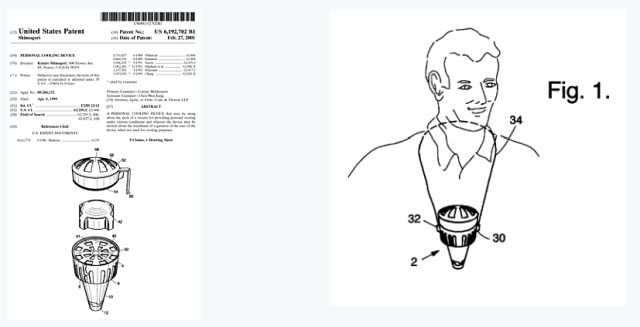
If you're looking for a way to stay cool on the go, U.S. Patent No. 6,192,702 describes a battery-powered portable fan that includes a frozen gel pack to cool air exiting the holes in the cap. As shown in FIG. 1, the fan can be worn around the neck to direct the cooled air at the neck and face of the user.
U.S. Patent No. 6,857,134
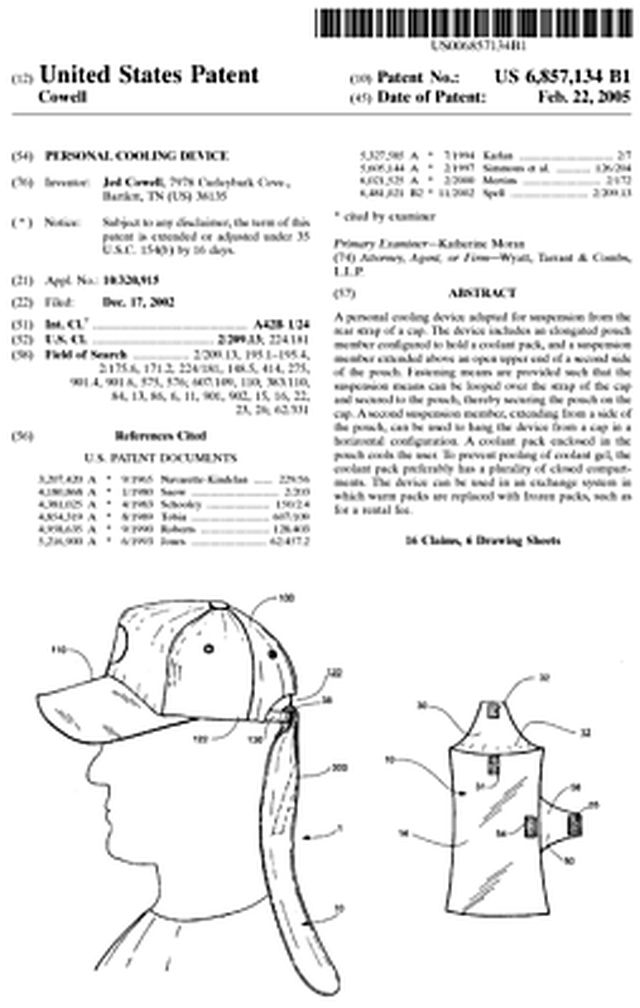
Perhaps you're more interested in something that doesn't require electronics. U.S. Patent No. 6,857,134 describes a pouch that holds a coolant pack. The pouch has a strap that extends over an opening to the pouch and can be used to form a loop to suspend the pouch from the back of a cap. The pouch therefore shields the user's neck from the sun while also positioning the coolant pack next to the user's neck.
U.S. Patent No. 6,463,756
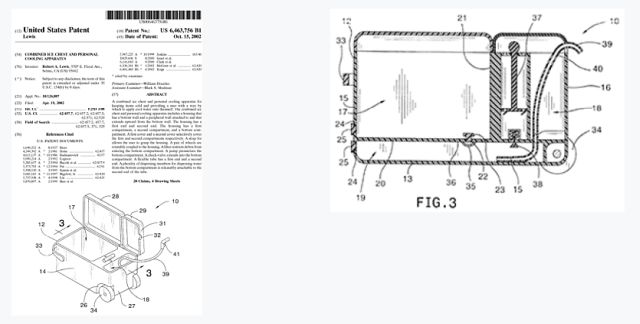
If you're looking to stay cool during a day at the beach, U.S. Patent No. 6,463,756 describes an ice chest that includes a way to disperse cooled water onto a user with a hose. The ice chest includes multiple compartments with one compartment sealed to allow a pump to pressurize the compartment. In one configuration, an aperture in the main compartment allows melting ice water to collect in a bottom compartment which is pressurized by the pump. A user can then use a hand-held spray device to dispense the cold ice melt via the tube.
U.S. Patent No. 5,855,371
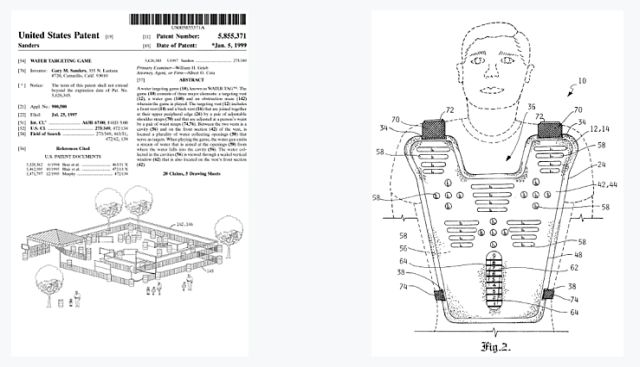
For the more ambitious, U.S. Patent No. 5,855,371 describes a water targeting game that occurs in an air-inflatable maze where players wield water guns and wear targeting vests. The vests have water-collecting openings which are connected to a sealed cavity on the vest. Players spray water from their guns into the water-collecting openings of competitors' vests and the quantity of water collected is determined by viewing the level of water visible through a window on the vest.
U.S. Patent No. 5,860,171
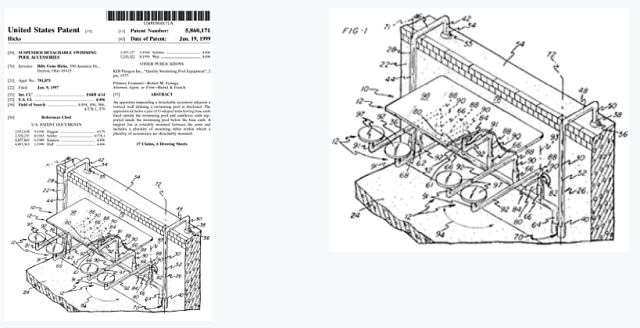
Maybe you own a pool and already have the escape from the heat that you need. There's no reason you can't make your time in the water more luxurious. U.S. Patent No. 5,860,171 describes an apparatus that suspends detachable pool accessories along the wall of a pool. In particular, the invention includes a frame with two arms and a horizontal support bar that extends between the arms. Base ends of the arms are secured to the deck around the pool and a plurality of stop arms engage the wall inside of the pool. Accessories such as chairs and a table can then be mounted to the frame.
While the owners of these expired patents can no longer enforce them, that doesn't mean there may not be some other active patents out there that cover similar inventions. In 2020, there were over three million active patents in the United States. As such, unless these "expired" designs are copied exactly, there is still a risk of unintentionally infringing some unknown patent. For this reason, we often suggest to our clients a freedom to operate search in which we look for active patents similar to the existing or future products. Based on the results we can offer an opinion as to the likelihood of infringement.
If you or your company have developed a new product, machine, or method, consider contacting the Intellectual Property attorneys at Stites & Harbison. It may be worthwhile to look into whether your invention may infringe on someone else's patent rights. If not, you can always file a patent application to pursue your own patent protection.
The content of this article is intended to provide a general guide to the subject matter. Specialist advice should be sought about your specific circumstances.
